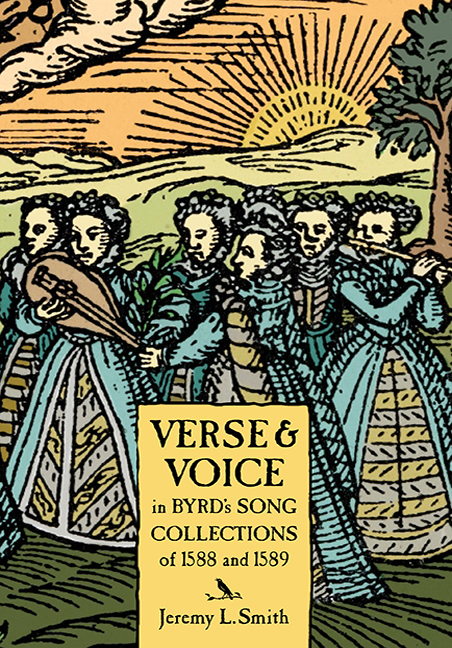Book contents
- Frontmatter
- Contents
- List of Figures
- List of Music Examples
- Preface and Acknowledgements
- Editorial Conventions
- Introduction
- CHAPTER 1 Psalmes
- CHAPTER 2 Sonets & Pastoralls, I
- CHAPTER 3 Sonets & Pastoralls, II
- CHAPTER 4 Sonets & Pastoralls, III
- CHAPTER 5 Songs of sadnes and pietie
- CHAPTER 6 Songs of Three Parts
- CHAPTER 7 Songs of Four Parts
- CHAPTER 8 Songs of Five Parts
- CHAPTER 9 Songs of Six Parts
- Conclusion
- Select Bibliography
- Index
- Studies in Medieval and Renaissance Music
Preface and Acknowledgements
Published online by Cambridge University Press: 05 July 2016
- Frontmatter
- Contents
- List of Figures
- List of Music Examples
- Preface and Acknowledgements
- Editorial Conventions
- Introduction
- CHAPTER 1 Psalmes
- CHAPTER 2 Sonets & Pastoralls, I
- CHAPTER 3 Sonets & Pastoralls, II
- CHAPTER 4 Sonets & Pastoralls, III
- CHAPTER 5 Songs of sadnes and pietie
- CHAPTER 6 Songs of Three Parts
- CHAPTER 7 Songs of Four Parts
- CHAPTER 8 Songs of Five Parts
- CHAPTER 9 Songs of Six Parts
- Conclusion
- Select Bibliography
- Index
- Studies in Medieval and Renaissance Music
Summary
IN the late-1970s, with Joseph Kerman and Oliver Neighbour, Philip Brett designed The Music of William Byrd to give meaning to the “commonplace” that Byrd's music rested on a “plane with the greatest masters of later years” and to “lay the foundation for its fuller understanding and appreciation.” Although Kerman's and Neighbour's books were published some thirty years ago and are now classics, Brett's untimely death in 2002 left incomplete this lofty project to subject all of Byrd's works to a searching and thorough appraisal. Brett planned to cover the composer's entire English-texted repertory. The present volume initiates an effort to resume this unfinished work, beginning here with the songs Byrd published in 1588 and 1589.
Although known to be “distinctly English” and on a par aesthetically with Byrd's efforts in other genres, these particular songs have been plagued for some time by a persistent but inappropriate comparison to the better-known Italianate English madrigal. My initial intent was to address this problem, as I believed it would have been a significant part of Brett's agenda. As I pursued the matter further I discovered, however, that Brett and others had already shown how little the consort song was diminished by the madrigal vogue of the day. Setting out with a decidedly different approach for meshing music and poetry, Byrd, as Brett, Kerman, and Neighbour all eloquently revealed, captured the true essence of the verses he set, all the while communicating feelings of great depth and expressing religious and political views of profound moment. Thus well-summarized accounts of Byrd's accomplishment are readily available and have already made their mark; and Byrd's skill at song composition was something his contemporaries must have appreciated too, given the influence of his collections and their treatment at the press. The task at hand seemed then to be to work out the details.
Once into the project, however, a new problem began to emerge.
- Type
- Chapter
- Information
- Publisher: Boydell & BrewerPrint publication year: 2016

